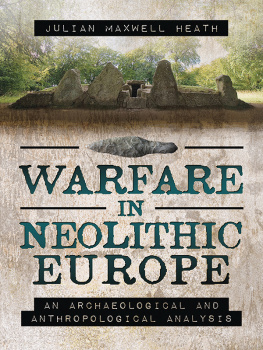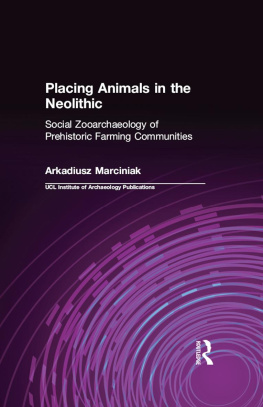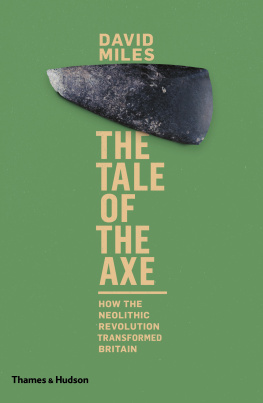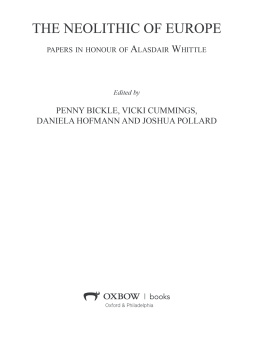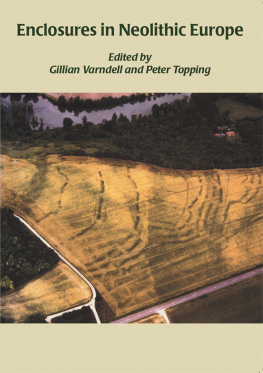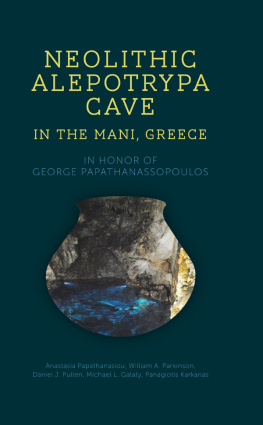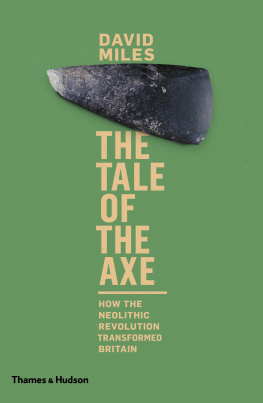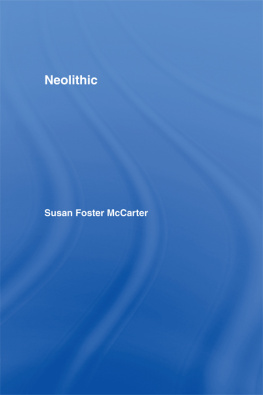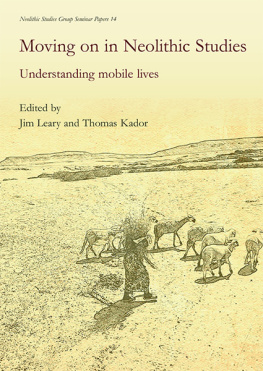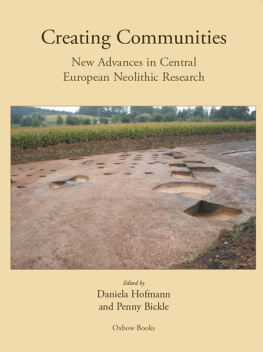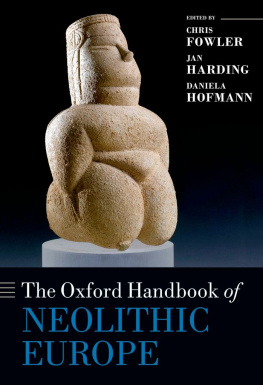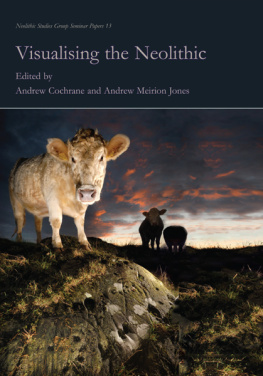
Warfare in Neolithic Europe
Warfare in Neolithic Europe
An Archaeological and Anthropological Analysis
Julian Heath
First published in Great Britain in 2017 by
Pen & Sword Archaeology
an imprint of
Pen & Sword Books Ltd
47 Church Street
Barnsley
South Yorkshire
S70 2AS
Copyright Julian Maxwell Heath, 2017
ISBN 978 1 47387 985 0
eISBN 978 1 47387 987 4
Mobi ISBN 978 1 47387 986 7
The right of Julian Maxwell Heath to be identified as Author of this work has been asserted by him in accordance with the Copyright, Designs and Patents Act 1988.
A CIP catalogue record for this book is available from the British Library.
All rights reserved. No part of this book may be reproduced or transmitted in any form or by any means, electronic or mechanical including photocopying, recording or by any information storage and retrieval system, without permission from the Publisher in writing.
Pen & Sword Books Ltd incorporates the Imprints of Pen & Sword Books Archaeology, Atlas, Aviation, Battleground, Discovery, Family History, History, Maritime, Military, Naval, Politics, Railways, Select, Transport, True Crime, Fiction, Frontline Books, Leo Cooper, Praetorian Press, Seaforth Publishing, Wharncliffe and White Owl.
For a complete list of Pen & Sword titles please contact
PEN & SWORD BOOKS LIMITED
47 Church Street, Barnsley, South Yorkshire, S70 2AS, England
E-mail:
Website: www.pen-and-sword.co.uk
For Pam, with Love
Acknowledgements
I would like to express my gratitude to all of the individuals who kindly provided images for use in this book, and all of the team at Pen and Sword Books who helped in its preparation and publication.
Introduction
In the Neolithic Age savage warfare did I wage
For food and woolly horses pelt.
I was singer to my clan in that dim, red Dawn of Man,
And I sang of all we fought and feared and felt.
(Excerpt from In the Neolithic Age by Rudyard Kipling, 1895)
T he emergence of the Neolithic or New Stone Age undoubtedly represents a pivotal point in human history. During this time, people turned away from a deeply ancient, semi-nomadic lifestyle based on the hunting and gathering of wild animals and plants, to a new one centred on domesticated crops and animals and permanent farming villages (although there is growing evidence that at least some hunter-gatherer communities lived in permanent settlements). This switch from hunting and gathering (or foraging as some archaeologists refer to it) to farming, led the renowned Australian archaeologist Vere Gordon Childe to propose one of the most famous concepts of prehistoric archaeology the Neolithic Revolution. Although Childes Revolution is now outdated and somewhat flawed, its underlying premise still holds true, as the emergence of farming in the Neolithic ultimately laid the foundations for the incredibly sophisticated (and socially stratified) modern societies in which many of us live today.
The first farming communities emerged in the Levant c. 9000 BC, although it is now realised that the origins of the Neolithic lie much further back in Near Eastern prehistory. Some 2000 years later, around 7000 BC, the first farmers in mainland Europe were arriving in Greece from western Anatolia, and perhaps also from the Levant. Archaeological evidence found on Cyprus at the sites of Kilmonas and Ayia Varvara-Asprokremnos strongly suggests that PPN (pre-pottery Neolithic) migrants from the Levant made landfall on the island as early as c. 8600 BC. This Cypriot evidence perhaps indicates that the earliest Neolithic sites on Greece may date back to well before the early seventh millennium BC, although as yet, none have come to light. From Greece and the Balkans, the Neolithic then basically spread across the rest of Europe through a combination of further migration by early farming groups and the adoption of this new lifestyle by indigenous Late Mesolithic communities; finally reaching the shores of Britain and Ireland around 43004000 BC. There were two main routes along which this Neolithic lifestyle spread into Europe from Greece and the Balkans: one running along the Danubian corridor, and the other along the coastlines of the northern Mediterranean.
From the perspective of our own troubled times, we could be forgiven for looking back through the millennia and seeing the Neolithic as a time when people lived simple and peaceful lives in pristine rural landscapes. However, we would be looking through glasses of a decidedly rosy hue, as archaeologists have discovered and continue to discover strong evidence for the existence of warfare amongst many of Europes first farming communities. This evidence should certainly not be taken as proof that warfare was endemic across Europe during the Neolithic, but it certainly reveals that many more people than we might like to think lost their lives in armed conflicts during this time. Indeed, as we shall see, the words of the seventeenth-century English philosopher, Thomas Hobbes, who famously described prehistoric life as nasty, brutish, and short in his famous work, Leviathan , seem rather apt in light of some of the archaeological discoveries from the European Neolithic. Although some still cling to the view that the European Neolithic was essentially peaceful (with a few minor but inconsequential violent skirmishes here and there) the archaeological evidence simply does not support this idea, and it is becoming increasingly harder to argue that Neolithic Europe was some sort of prehistoric utopia peopled by peace-loving farmers.
I should mention that is well beyond the scope of this book to provide a comprehensive account of all the possible archaeological data pertaining to Neolithic warfare in Europe, and indeed, this would surely be an impossible task entailing the examination of a huge corpus of academic literature written in many different European languages. I have therefore had to be selective in what is included in its pages and not all of Europe has been covered, although all of the famous sites connected with Neolithic warfare have been included, along with some that are not so well known. It should also be noted that some of the archaeological material covered here dates to the period that is often referred to as the Chalcolithic, Copper, or Early Bronze Age, when copper (and gold) objects first began to be made and used in Europe. However, the Copper Age communities of Europe were, to all intents and purposes, still living a Neolithic lifestyle. Hence the reason why many archaeologists prefer to use the terms Late Neolithic, Final Neolithic, or Eneolithic, for this fascinating and hugely important time of transition.
Of course, some people may wonder why we would want to study warfare in prehistory? After all, it has caused human societies so much pain and suffering, with millions of people killed around the globe as the result of warfare, and unfortunately, as we are all too aware, this ugliest facet of human nature shows no signs of going away. However, to quote Don Brothwell: A first obvious answer is that there is plenty of evidence in the past of weapons and direct evidence of human trauma indicative of some form of conflict. But more importantly, human aggression, conflict and warfare have a history, and archaeology demonstrates that the temporal dimension is long and deserves detailed study, as it is certainly a major and recurring theme in ancient human society. Of course, while such arguments are hard to disagree with, we must also remember that behind the mute archaeological remains covered in this book, there are human stories of grief, pain, and suffering.
Next page
